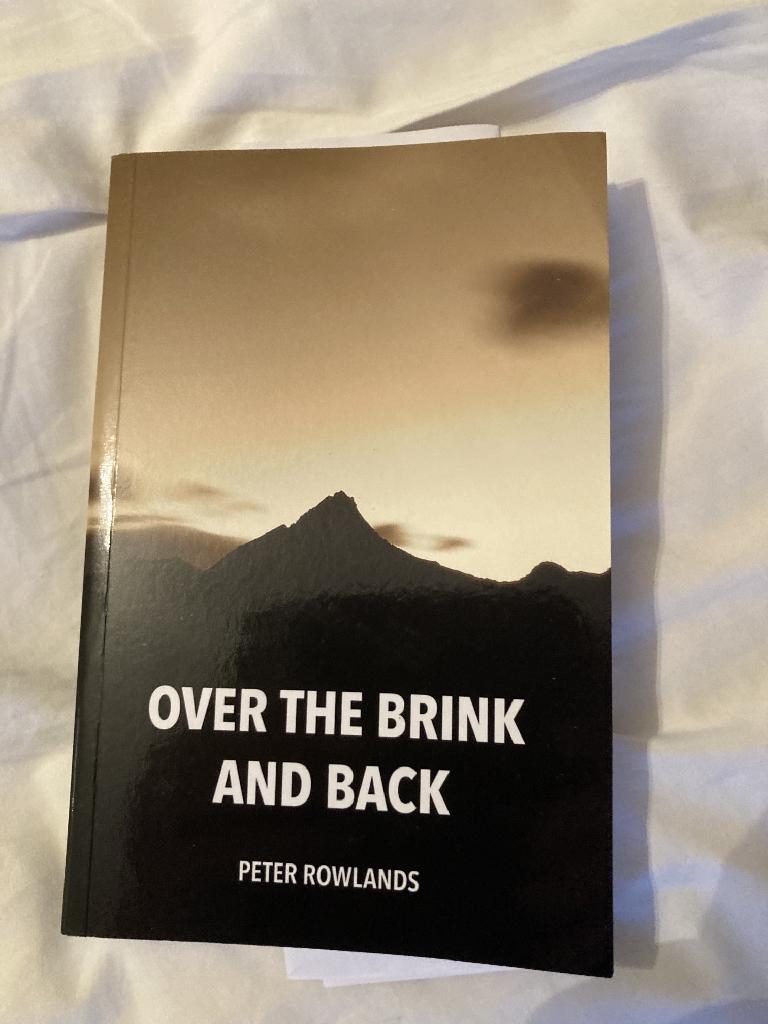Over The Brink
Posted by Jeremy Windsor on May 5, 2023
For many years Pete Rowlands worked as a highly successful mountain guide. This all changed in 2013 when he suffered life changing injuries following a fall. In "Over The Brink" Pete describes his life leading up to the accident and his subsequent recovery. Here's Tony Page to tell us more...
In April 2013 IFMGA mountain guide Peter Rowlands was heading for a mountain hut in the Niedertal Valley in Austria when he was caught in an avalanche and swept 140m over a cliff. He was carried down into a river at the bottom of a ravine. Amazingly he survived the fall, was not buried by the snow, and did not drown. He was rescued by helicopter and less than an hour after the accident he was in theatre in Innsbruck Hospital having pieces of his fractured skull removed from his brain.
Rowlands’ short book is a compelling narrative and divides into two halves, a before and after. In the first half he writes about significant episodes on his path to qualifying as a mountain guide, from his first mountain, Snowdon, climbed with his dad when he was eight, through climbing E5 at 14, an outdoor studies degree course at Ambleside, a year as an assistant instructor at Plas y Brenin, summer, winter and alpine climbing, skiing and ski touring, ticking off the various mountain qualifications from summer mountain leader award through to mountain instructor certificate; and along the way having hair-raising adventures surfing and kayaking. The chapters in this first half are short, some only a page or two long.
In the second half of the book, Pete details his long recovery and rehabilitation. He was in hospital a total of 19 months, from intensive care unit to neurorehabilitation centre. In addition to the penetrating brain injury he had diffuse axonal injury and his family were warned that he might not survive, or if he did that he might be left in a vegetative state. Six months after the accident, during an ultrasound scan to rule out carotid artery damage, he was found to have an enlarged lymph node in his neck. This turned out to be Hodgkin’s lymphoma, and he had three months of chemotherapy followed by 15 sessions of radiotherapy. Ironically, but for the accident the diagnosis would have been delayed, worsening the prognosis.

"What if the worst really happened? What if everything you have held so dear were to be taken away in a blink of an eye: my way of living, my job, my social life ... everything?!"
When he left hospital to move into a new flat, he needed 24-hour care and because of swallowing difficulties was fed through a PEG tube. However, he joined a gym and engaged a physiotherapist/personal trainer. He took up cycling. He tried some easy climbing with friends but didn’t enjoy being ‘looked after’. He did enjoy kayaking, though, and eventually was able to circumnavigate Anglesey. His cumulative distance cycled passed 40 000 km and towards the end of the book he is planning to bike-pack round the country.
The chapters in the second half of the book are longer. Pete’s remarkable recovery involved a lot of hard work and effort, and required support from trainers, friends and especially from family. He is still at risk of choking so has to eat soft food. His speech is slurred and his gait is abnormal. He comments that 12 km is his longest walk since his accident, but he has made a mental adjustment - from hating the word ‘disabled’ he has now ‘grown to almost relish the description’.
Inevitably, this book will be compared to Paul Pritchard’s Totem Pole and The Mountain Path - also books about recovery from severe head trauma incurred in the mountains. Both authors were extremely able mountaineers, and both describe the hard work and determination rehabilitation demands and both, to a greater or lesser extent, consider the parallel psychological changes involved. Pritchard is the more accomplished writer, but he has been writing for longer, with Deep Play published before his accident. In The Mountain Path, Pritchard revisits and reconsiders episodes he wrote about in his previous books, and I wonder if Pete would consider elaborating on the abbreviated stories in the first part of his book. He continues to plan adventures, and though he didn’t enjoy being led up easy routes, and though his walking distance is limited, he ends his last chapter with the words: ‘See you in the mountains’. Perhaps a return to the hills is on the cards? If so, it would be great to read about any new mountain adventures and, of course, about his next cycling and kayaking exploits.
Tony has written a series of brilliant reviews for us. Check out his review of Kieran Cunningham's "Climbing The Walls" here.
Thanks for reading this post. If this is your thing why don't you take a look at other posts on the blog? Better still, why not join the British Mountain Medicine Society? More information can be found here
For more information about the University of Central Lancashire's Diploma in Mountain Medicine (DiMM) take a look at this.
Comments
Leave a comment.



 )
)